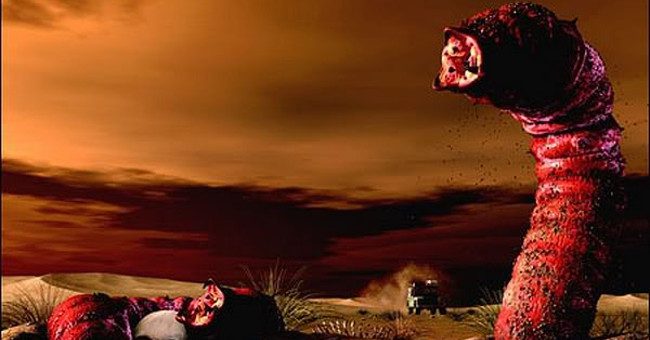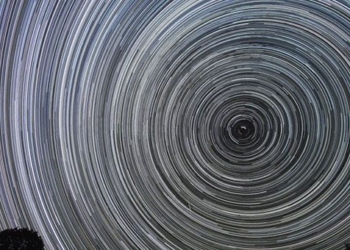This mysterious creature can spit deadly yellow acid that kills instantly.
The Legend of the Mongolian Death Worm
Worms are a nightmare for many people. However, those are just small worms, while the Mongolian Death Worm is the true monster that brings fear to humanity.
This giant worm-like creature is believed to inhabit the Gobi Desert, a vast desert covering a large area in Central Asia, spanning parts of China and Mongolia.
This place is known as a frigid desert, occasionally seeing snowfall on its sand dunes. The temperature here can change remarkably fast.
Local residents refer to it as allghoi khorkhoi or intestine worm because it resembles a blood-red piece of cow intestine, with some areas displaying darker segments and protrusions at both ends.
Ranging from 0.5 to 1.5 meters in length, this worm appears very peculiar, with an indistinct head and tail as no one has ever seen its eyes, nostrils, or mouth. Its movement is also unusual, rolling and wriggling very quickly.
In terms of appearance, it has been featured in many science fiction films, such as the sci-fi film “Dune” directed by Denis Villeneuve, released on October 22, 2021.
According to legends passed down among the people of the Gobi Desert for thousands of years, this worm possesses a mystical ability to spit yellow acid that kills instantly upon contact or to eliminate its prey from a distance with a powerful electrical discharge.

Illustration of the Death Worm.
Explorer Ivan Mackerle from Czechoslovakia describes the death worm based on local accounts: “It looks like a sausage, plump like a man’s arm, quite similar to livestock intestines. Its tail is short as if cut off, but not sharp.
It is difficult to determine where the head and tail are because no eyes, nose, or mouth are visible. It moves in a very peculiar way – rolling swiftly or wriggling on one side. It lives in the desolate sand dunes and the scorching valleys of the Gobi Desert, where saxaul trees grow underground.
You can see it during the hottest months of the year, June and July. After that, it buries itself in the sand and sleeps for most of the remaining year. Usually, it will come out after rain or when the ground is moist.
Cultural Impact of the Mongolian Death Worm
The Mongolian Death Worm is not only a terrifying monster but also a testament to the harshness and unpredictability of the desert landscape, playing a significant role in Mongolian folklore.
This creature is believed to be able to spit yellow poison or electrocute humans or animals that come near it. These stories have been passed down from generation to generation in Mongolian society and have become a cultural heritage.
Whether this creature truly exists remains a mystery, but many secrets lie hidden beneath the sand dunes waiting to be unveiled. The legend of the Mongolian Death Worm serves as a reminder to locals and tourists alike to respect the ruthlessness and harshness of the Gobi.

The Mongolian Death Worm once gained fame among Westerners, inspiring thrilling novels and enticing many to flock to the Gobi Desert in search of it. (Illustrative image).
Monsters in Popular Culture and Imagination
The allure of the Mongolian Death Worm captivates not only scientists but also excites explorers and thrill-seekers. Many hope to be the first to discover something real. However, an adventure in the Gobi is not for the faint-hearted due to the extreme temperatures, vast sand dunes, and potential dangers.
Ultimately, the Mongolian Death Worm remains an enigma, lying at the intersection of myth and reality. The legend of the Mongolian Death Worm reminds us that the world still holds mysteries waiting for us to explore. Whether it exists or not, it leaves an indelible mark on culture and human curiosity.



















































